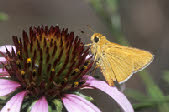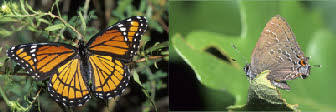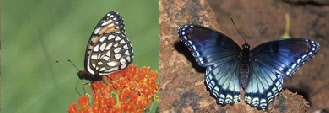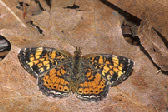The Butterflies of the World Foundation
A Non-





Celastrina neglecta, Little Yellowstone Park, Barnes County, North Dakota, 12 July 2003
Ref
#: I-

Celastrina neglecta, Little Yellowstone Park, Barnes County, North Dakota, 28 June 2003
Ref
#: I-
Summer Azure
Celastrina neglecta, W. H. Edwards, 1862
Subfamily Polyommatinae
Taxonomy
The family Lycaenidae is a large and varied worldwide group that has 4,000 to 6,000
species depending on the ever-

Celastrina neglecta, Lexington Wildlife Management Area, Cleveland County, Oklahoma,
5 August 2010 Ref
#: I-
General Information:
Celastrina neglecta belongs to the subfamily Polyommatinae. This butterfly’s range is the eastern half of the U.S. and southeastern Canada It is found in openings and edges of deciduous woods, old fields and gardens.
Lifecycle:
The larval food sources includes flowers of a variety of woody shrubs and occasionally herbs including dogwood (Cornus florida) and New Jersey tea (Ceanothus americana). Caterpillars eat flowers and Chrysalids overwinter until flower late spring or summer.
All photographs, artwork, text and website design are the property of The Butterflies of the World Foundation (unless otherwise stated) and are protected under national and international copyright laws. Photographs, artwork or text on this website may not be reproduced in any way without prior written consent of The Butterflies of the World Foundation.

Roughleaf Dogwood, Cornus drummondii, a common larval food source, Lexington Wildlife
Management Area, Cleveland County, Oklahoma Ref
#: F-

Roughleaf Dogwood, Cornus drummondii, a common larval food source, Lexington Wildlife
Management Area, Cleveland County, Oklahoma Ref #: N-

Roughleaf Dogwood, Cornus drummondii, a common larval food source, Lexington Wildlife
Management Area, Cleveland County, Oklahoma Ref #:
F-

Roughleaf Dogwood, Cornus drummondii, a common larval food source, Lexington Wildlife
Management Area, Cleveland County, Oklahoma Ref #:
N-

Roughleaf Dogwood, Cornus drummondii, a common larval food source, Lexington Wildlife
Management Area, Cleveland County, Oklahoma Ref
#: F63-